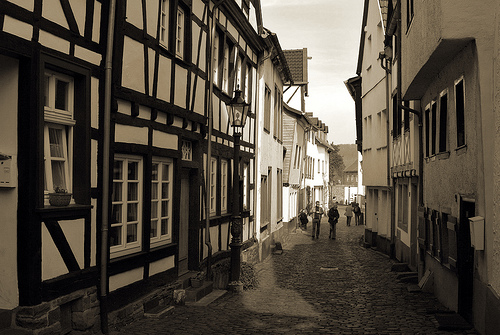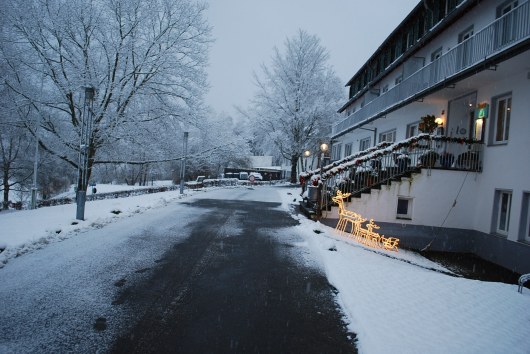Bad Münstereifel literally translates to “Bath the cathedral Eifel,” a name coined by the historical background of this small shanty town, The attractive mediaeval town of Bad Münstereifel is recognised by the German authorities as a spa resort (as ‘Bad’ translates to Bath) , and since it’s just on the edge of Eifle, it is called “Bad Münstereifel”. It is also often called “Rothenburg on the Rhine” cause of its proximity with the River. It is situated in the Upper Erft Valley on the northern fringe of the Eifel. During the 12th century, the impressive collegiate church was built in this town, which still rises high above the old town center. About a hundred years later, a fortification with four city gates and 18 fortified towers was built, which today is considered the best-preserved city wall of the Rhineland.
Only a countable number (around 20,000) people live in this Kneipp health resort, which attracts a good number of “Weekend Tourists,” as they are called. This picturesque town lies on the banks of the river Erft, (which I still had to explore as it was just a small stream by now), presents its visitors with a charming contrast between a historical townscape and a vibrant Kneipp health spa.
The town is so small that all destinations are at a cozy or intermediate stop, which again makes this town a worth just day-trip. But I was to dwell in it for a whole two months (October & November, 08), which at times made me quite exhausted of its beauty and serenity. But that is just exactly what you expect from a traffic-jams-trodden and metropolitan Karachiite. Bad Münstereifel has been part of the district of Euskirchen since 1969, the district we had to commute up and down for straight two months (as this was where I had my “adopted workplace” for the trip).
Around the town, there are loads of gardens and parks for people looking for relaxation, with sufficient space to linger and rest. Popular with people of all ages is the “Eifelbad”, a swimming pool with whirlpools and a giant slide. I unfortunately didn’t get the time to visit this luxury, but that was a decision I had to stand by while freezing under a foot of snow. My recreation in town was limited to a walk down to the old town center, or a drive to the indoor sports facility at Zikürat.
The weather was quite pleasant in the beginning of October, around 10-15 Celsius, and then it started to cool down around starting of November, around 1 or at freezing point. The mornings are extremely pleasant, especially on the weekends, when you see lots of troupes of hikers or bikers filling up the empty rooms in the hotel. Here, with fishing, tennis, archery or outdoor horseback riding being on offer, every visitor can indulge in his favorite leisure time activity in a beautiful landscape and a pleasant climate. But all these come to almost a complete halt when the snow comes down, around about last week of November. The temperature then dip to as low as minus 10 Celsius, but one of the locals told that it gets worse when blizzards hit at the end of December and all of January, and mercury could go to as low as minus 15 Celsius!
The town has very limited number of places to dine in, but the ones it has serve good and solid delicacies, among them is the nationally known icon of folk music, Heino. The one place that I most often went to was this shabby little Italian eatery called “Trattoria Portofino”, with this extremely gregarious Italian server, perhaps the only one in town’s restaurant propertiers who knew English 🙂
Bad Münstereifel is a romantic small town with pictorial half timbered houses, a lively pedestrian precinct with attractive business and many lively Cafés, grown historically, along the Erft. You can reach the historical local centre with its narrow roads and lanes by means of four historically important city gates in the four directions. The castle tower thrones above the city, which also has the 15th century city fortifications to surround the inner part of town. From here you can enjoy a wonderful view over Bad Münstereifel.
The whole area around the town is heavily wooded and there are more than 150 miles of pathways as well as woodland recreation areas where people can enjoy a variety of outdoor activities. The radio telescope in nearby Effelsberg is well worth visiting as it boasts a parabolic reflector the size of a soccer pitch and is the largest fully-mobile radio telescope in Europe. The sight was breathe-taking! And when it rotates, you feel the Earth move! It was an amazing experience watching it target the exact location!
Bad Münstereifel is worth an attendance at each season, but definitely not worth a stay for over a week or two at most 😉

